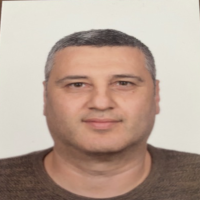Research Article
Case Report
Aim & Scope
Troia Medical Journal is a peer-reviewed scientific journal published by Çanakkale Onsekiz Mart University Medicine Faculty. It publishes articles with double-blind peer review process in the field of general medicine. The aim of our journal is to publish high quality and reliable articles contributing to scientific knowledge, and written on current topics in all branches of medicine in accordance with ethical principles to reach readers at national and international level. Within the framework of scientific independence and freedom of expression, our main goal is to publish without prejudice, and respecting ethical principles, publishing rights and intellectual property concepts.
Our journal is published three times a year, both in open access and in print. Supplements are issued on the subjects determined by the editorial board. Publication policy and processes are carried out by following International Committee of Medical Journal Editors (ICMJE), World Association of Medical Editors (WAME), Council of Science Editors (CSE), European Association of Science Editors (EASE) and Committee on Publication Ethics (COPE) guidelines. Original scientific value and high writing quality conditions are sought for the articles to be published. Issues include original research articles, case reports, reviews and letters to the editor in the fields of basic, internal and surgical sciences. The language of the journal is Turkish and English. In all articles, the title and abstract (except in letters to the editor) are published in both languages. Our journal is open access, and the authors are not charged for evaluation, publication, publication or any other process.
The most important mission of our journal is to increase the contribution of our country to the developments in the field of medicine all over the world. In this context, our main goal is to create a journal that is suitable for medical scientists in our country, easily accessible, respected and reliable, adopting good refereeing practices as a principle, and focusing on current and interesting topics. The target audience of the journal is academicians and healthcare professionals working in all fields of medicine in the world and in our country. The most important goal of our journal is to be a pioneering medical journal indexed in reputable databases with high impact value in the international arena, and followed with interest by relevant scientists all over the world.
Author Guidelines
1. General
• The journal publishes original research articles, case reports, reviews and letters to the editor.
• The manuscripts submitted should be based on a well defined research question, and the titles should be coherent. References should be sufficient and diverse enough to reflect the scope of the study.
2. Language
• The journal accepts manuscripts written in Turkish or English. In all manuscripts, abstract and title of the article should be prepared in both languages.
• The latest edition of Turkish Language Society Spelling Book is based on for spelling and punctuation. Manuscirpts should be in conformity with scientific rules, plain and clear with regard to language and expression.
• When necessary, manuscripts may be revised in terms of spelling and punctuation by editors and/or advisors.
3. Compliance with Scientific and Ethical Rules
• Authors are responsible for the conformity of their manuscripts with scientific and ethical rules. In this regard, the explanations stated in the Ethical Responsibilities of Authors section of the Ethical Principles and Publication Policy should be followed.
• Manuscripts that do not comply with the spelling, ethics and publication rules of the journal in pre-evaluation may be returned to the authors for correction or rejected by the editor.
• Authors are responsible for the conformity of their manuscripts with bio-statistical rules. “P” values should be given precisely (i.e. p=0.025; p=0.524). The article can be evaluated by the statistics editor before or after the peer-review process. When it is decided that the statistical method is not suitable, the article can be rejected before or after the peer-review process.
4. Copyright
• According to 1976 Copyright Act, all kinds of publishing rights of manuscripts accepted belong to the institution publishing the journal. Authors have the full responsibility of ideas and suggestions in their manuscripts.
• Together with the manuscript, the Author Consent Form should be sent. The Author Consent Form can be found at the journal’s website. It should be filled up and signed by all the authors and sent with the manuscript.
• Together with the manuscript, the Copyright Form should be sent. The Copyright Form can be found at the journal’s website. It should be filled up and signed by all the authors and sent with the manuscript.
• No fees or rewards are paid for the pubished manuscripts.
5. Formatting Pages
• Manuscripts are only accepted in electronic form. They should be written in a format suitable to be viewed in Microsoft Word.
• Automatic formatting features (section and page breaks, footer and header, page number, automatic numbering and bullets, automatic heading formatting, automatic numbering in references, etc.) should not be used in articles.
• The manuscript should be written in 12 points font with Turkish character support (Arial, Helvetica, Times New Roman, etc.), double spaced, A4 size, with minimum page margins of 2,5 cm in each direction.
• The manuscript should include titles. Titles should be written in bold capitals without numbers. All the titles should be in alignment with the first line of the paragraph.
• System International (SI) units should be used in manuscripts. A dot should be used as a separator for fractional numbers.
6. Tables and Figures
• Tables and figures must be original and not previously published elsewhere.
• Tables and figures (graphics, pictures, photographs, etc.) should not be included in the text. All tables and figures should be cited in the text. Tables and figures should be numbered in Arabic numerals (1, 2, 3, etc.) in the order of citation. Table titles and figure legends should be listed in a separate page after the references section of the manuscript.
• Tables should be prepared in separate Word files, and uploaded to the journal system as separate files.
• Graphics, pictures, drawings, photographs, histopathological and radiological images, flow diagrams and other visual elements should be named as Figure.
• Figures should be in JPEG format and at least 300 dpi. Figures should be large enough to provide high quality details, and they should be clearly visible when reduced or enlarged for printing. The fonts used inside of the figure should be in Times New Roman, and in a point that can be read when reduced at the printing stage.
7. Title Page and Cover Letter
• All manuscripts should be submitted with a title page and a cover letter.
• Title page should include Turkish title, English title, Turkish running title (maximum 40 characters), English running title (maximum 40 characters), numbered names of the authors in the order to appear for publication, the name and city of the institutions where the authors work, the e-mail addresses and ORCIDs of the authors, the corresponding author's name, address, e-mail address, telephone and fax numbers.
• The names and institutions of the authors should not be written in the article text.
• The cover letter should be addressed to the editor, the subject and importance of the submitted article should be specified, and it should be clearly declared that the issues stated in the journal's Ethical Principles and Publication Policy are complied with. Conflicts of interest and funding should be explained here. It should be noted that the article has not been published before and has not been sent to another journal for publication, and that the authors approved the final version of the text. If the article has been presented at a meeting before (poster, oral presentation, etc.), it should be indicated, and meeting details should be given.
8. Formatting the Manuscript Text According to the Type of Article
• Original research articles should have sections including abstract (Turkish and English), keywords, introduction, materials and methods, results, discussion, references, table titles, and figure legends. Özet should be structured including amaç, yöntem, bulgular ve sonuç sections, and abstract should be structured including objectives, methods, results and conclusion sections. The özet and the abstract should be identical, and have 100-250 words. 3-6 keywords in Turkish and English should be written. The entire text (including Turkish and English abstracts, excluding references) should not exceed 5000 words. References should not exceed 40.
• Case reports should have sections including abstract (Turkish and English), keywords, introduction, case(s), discussion, references, table titles, and figure legends. The özet and abstract shouldn’t be structured. The özet and abstract should have 100-250 words. 3-6 keywords in Turkish and English should be written. The entire text (including Turkish and English abstracts, excluding references) should not exceed 3000 words. References should not exceed 20.
• Reviews should have sections including abstract (Turkish and English), keywords, introduction, adequate titles, discussion, references, table titles, and figure legends. The özet and abstract shouldn’t be structured. The özet and abstract should have 100-250 words. 3-6 keywords in Turkish and English should be written. The entire text (including Turkish and English abstracts, excluding references) should not exceed 7000 words. There is no restriction for the number of references.
• Keywords should be chosen from Turkey’s Science Terms (http://www.bilimterimleri.com). Turkey’s Science Terms is a keyword index which includes the Turkish meanings of MeSH (Medical Subject Headings) terms.
• In these article types, a thank you section can be added at the end of the text and before the references section.
• Letter to the editor is accepted in the following formats: i) Letters invited by the editor, ii) analysis of an article published in the Troia Medical Journal or another journal, and iii) letters expressing the opinions of an expert researcher on a current topic within the scope of the journal. Invited letters (i) and letters sent for analysis of an article (ii) can be published without the peer-review process with the editor's decision. Letters expressing the opinions of an expert researcher (iii) should be written by a single author, and the author is required to have articles published in journals listed in international indexes on the subject. The author must show that he/she meets this requirement by referring his/her articles in the cover letter. Letters should have sections including abstract (Turkish and English), keywords, text and references. The özet and abstract shouldn’t be structured and should have maximum 100 words. The entire text (excluding abstract and references) should not exceed 1000 words. References should not exceed 10. In the letters sent for criticism, contribution and response, the full citation of the relevant article should be clearly stated.
9. References
• Authors are responsible for the correctness of the references.
• References should be written in conformity with Vancouver style (https://www.ucd.ie/t4cms/ Guide72.pdf). They should be expressed with numbers in square brackets at the end of sentences.
• References section should be placed at the end of the script and the references should be in the same order as they appear in the main text.
• References should contain the initials of the authors, title of the script, name of the journal, publication date, volume number, first and last page numbers of the script. For scripts which have more than six writers, after the first three, the term “ve ark.” in Turkish and “et al.” in English should be used. Abbreviations should be in accordance with Index Medicus.
Examples:
References of scripts published in a journal:
Edremitlioğlu M, Oner G. The role of cholesterol on the pressure sensing ability of kidneys in rats. J Basic Clin Physiol Pharmacol 2003(4);14:345-58.
Stephane A. Management of congenital cholesteatoma with otoendoscopic surgery: case report. Türkiye Klinikleri J Med Sci 2010(2);30:803-7.
*Names of the journals published in Turkey (excluding the ones indexed in PubMed) should be fully written.
References of presentations:
Galloway AC, Ribakove GH, Miller JS, et al. Minimally invasive port-access valvular surgery: Initial clinical experience. Presented at the 70th Scientific Session of the American Heart Association; Nov 10-13, 1997; Orlando, FL. Circulation 1997;96:2845.
References of books:
Dieffenbach CW, Dveksler GS. PCR Primer, 2nd Edition. New York: Cold Spring Harbor Laboratory Press, 2003:107-8.
References of sections of books:
Aşgün HF, Kırılmaz B, Şener A. Cardiovascular Tuberculosis. In: Şener A, Erdem H (Eds). Extrapulmonary Tuberculosis. Cham: Springer, 2019, pp: 155-73.
References for on-line publications:
Non-commercial official web pages of governments, national and international scientific boards and institutions may be referenced with the date accessed.
Kavuncu V, Evcik D. Physiotherapy in rheumatoid arthritis. http://www.medscape.com/ viewarticle/474880?src=search. Accessed on Oct 10, 2018.
References of theses:
Yüksel P. The effect of ozone treatment to blood samples of patients with rheumatoid arthritis on DNA damage. Post Graduate Thesis. Çanakkale: Çanakkale Onsekiz Mart University, Department of Physiology, 2017.
Ethical Principles and Publication Policy
1. General Ethical Principles
• Publication processes of Troia Medical Journal are based on producing, developing and sharing knowledge evenhandedly within scientific methods. On this basis, Troia Medical Journal is peer-reviewed open access scientific journal. It is aimed to carry out scientific production in accordance with ethical principles by editors, referees, authors and all stakeholders.
• The ethical task and responsibilities below, has been prepared considering the guidelines and policies, published by the Committee on Publication Ethics (COPE). COPE Best Practice Guidelines for Journal Editors have been adopted by all editors and scientific board. The journal's publication processes are executed in accordance with the guides, International Medical Journals Editors Board (ICMJE), World Association of Medical Editors (WAME), Council of Science Editors (CSE), Committee on Publication Ethics (COPE), European Association of Science Editors (EASE), National Information Standards Organization (NISO) and DOAJ-Principles of Transparency and Best Practice in Scholarly Publishing.
• The compliance of the article with ethical rules is the responsibility of the authors. The Editorial Board of the journal handles all appeal and complaint cases within the scope of COPE guidelines. If there is a citation from the previously published articles, the author of the article must have the right to publish the article and have written consent from the authors and state it in the article. The consent document must be sent to the editorial board along with the article.
• The manuscripts are scanned by the journal using the iThenticate program for determination of plagiarism and non-ethical situations. Troia Medical Journal will immediately reject manuscripts with plagiarism.
• The owner of the journal, any other political or economic factors do not influence the independent decision-making mechanism of the editors.
• Authors can withdraw their manuscript before the beginning of peer-review process with a letter to the journal editors stating that they want to retract their manuscript. Unless the retraction request is approved by the editorial board, authors cannot send their articles to another journal for evaluation.
• At any stage of the journal's publishing process or after the article has been published, no fee or donation for evaluation, publication, printing, or disseminating processes can be requested from any author.
2. Ethical Responsibilities of the Publisher
• The publisher undertakes to have an independent editorial decision made.
• The publisher protects the intellectual property rights of all the articles published in Troia Medical Journal and holds the responsibility to keep a record of each unpublished article.
• The publisher bears all the responsibility to take the precautions against scientific abuse, fraud and plagiarism.
• If there are situations that require correction of errors in the articles, the corrections are presented in the contents page, have links to the original article.
• If there is scientific fraud in a published article, the journal publishes a retraction letter. As an alternative to retraction, the editor may choose to publish a statement of concern about the work. The retraction or concern statement appears on a numbered page in a particular section of the journal, and is listed on the table of contents, and includes the title of the original article in its introduction, as well as in its online version. The reason for the retraction of the article is explained in the retraction text.
• Reviews of referees cannot be published or disclosed without the permission of the author and editor.
• Care should be taken to keep the identity of the referees anonymous. In some cases, with the decision of the editor, the comments of the referees on the article can be sent to other referees who interpret the same article to clarify comments.
• In case of encountering a situation or content that does not comply with the ethical principles regarding the editors, referees, authors in the content of Troia Medical Journal, it should be reported to the e-mail address of the journal.
3. Ethical Responsibilities of Editors
The Editorial Board is formed by academicians who have proven their scientific competence, and who have committed to work for the journal without any interest. Members of the Editorial Board are appointed according to the disciplines of health sciences without time restriction. The Editor-in-Chief or Editorial Board may appoint non-editorial board members as field editor or assistant editor depending on the field of the article.
3.1. General duties and responsibilities
Editors are responsible for each study published in Troia Medical Journal. In this respect, the editors have the following roles and responsibilities:
• Making efforts to meet the demand for knowledge from readers and authors,
• Ensuring the continuous development of the journal,
• Managing the procedures aimed to improve the quality of the studies published in the journal,
• Supporting freedom of expression,
• Ensuring academic integrity,
• Following the procedures without making concessions on intellectual property rights and ethical standards,
• Being transparent and clear in issues that require correction or explanation.
Under these principles:
• Editors are responsible for all the processes that the manuscripts submitted to Troia Medical Journal will go through. Within this framework, ignoring the economic or political interests, the decision-makers are the editors.
• Editors, considering that there may be conflicting interests between reviewers and other editors, guarantee that the publication process of the manuscripts will be completed in an independent and unbiased manner.
• Editors does not share information about the articles (receipt of the article, its content, the status of the review process, the criticism of the referees or the conclusion) with anyone other than the authors or referees.
• Editors are obliged to comply with the policies of blind peer-review process. Therefore, the editors ensure that each manuscript is reviewed in an unbiased, fair and timely manner.
• Editors are responsible for publishing each article in accordance with journal publishing policies and international standards.
• Editors are supposed to protect the personal information related with the subjects or images in the studies being reviewed, and to reject the study if there is no documentation of the subjects' consent. Furthermore, editors are supposed to protect the personal information of the authors, reviewers and readers.
• Editors are supposed to protect human and animal rights in the studies being reviewed, and must reject the experimental studies which do not have ethical and related committee’s approval.
• Editors are supposed to take measures against possible abuse and malpractice. They must conduct investigations meticulously and objectively in determining and evaluating complaints about such situations. They must also share the results of the investigation.
• Editors must make sure that the mistakes, inconsistencies or misdirection in studies are corrected quickly.
• Editors are responsible for protecting the intellectual property rights of all articles published in the journal, and the rights of the journal and authors in cases where these rights are violated. Also, editors must take measures to prevent the content of all published articles from violating the intellectual property rights of other publications.
• Editors must:
o Pay attention to the convincing criticism about studies published in the journal and must have a constructive attitude towards such criticism.
o Grant the right of reply to the authors of the criticized study.
o Not ignore or exclude the study that include negative results.
o Examine the complaints from authors, reviewers or readers and respond to them in an explanatory and enlightening manner.
• The editor-in-chief first evaluates the publication ethics of an article submitted for evaluation, then examines the scientific importance, originality, scientific validity and relevance to the journal's scope, and submits the article to the field editor or referees.
• Editors can reject the article or send it back to the author in case of any negative situation.
• Editors are responsible for the selection of referees from among academicians who are experts in the field of the manuscript, and for keeping blind the referees to the authors and their institutions, and for keeping blind the authors to the referees unless the referee specifically requests otherwise.
• Editors are responsible for submitting the corrections requested by the referees to the author in an explanatory and polite language.
• Editors are responsible for the ethical and scientific maintenance of referee evaluations including special evaluations (statistical analysis, etc.) within the scope of the Article Evaluation Form, and to contribute to the authors in the preparation of the articles.
• Editors should make it clear that the articles submitted to reviewers for their peer-review are the private property of the authors, and that this is a privileged communication. Referees and editorial board members cannot discuss articles open to the public.
3.2. Relationships with the Journal's owner and publisher
The relationship between the editors and publisher is based on the principle of the independency of editors. All the decisions made by the editors are independent of the publisher and the owner of the journal as required by the agreement made between editors and publisher.
3.3. Relationships with the editorial board
Editors must:
• Make sure that the members of the editorial board follow the procedures in accordance with the publication policies and guidelines.
• Inform the members about the publication policies and developments.
• Ensure that the members of the editorial board review the manuscripts in an unbiased and independent manner.
• Select the new members of the editorial board from those who can contribute to the journal and are qualified enough.
• Send manuscripts for review based on the subject of expertise of the editorial board members.
• Regularly communicate with the editorial board.
• Arrange regular meetings with the editorial board for the development of publication policies and the journal.
3.4. Relationships with reviewers
Editors have the following duties and responsibilities in their relations with reviewers:
Editors must:
• Choose reviewers according to the subject of the study.
• Provide the information and guidance to reviewers that they may need during the review process.
• Observe whether there are conflicting interests between reviewers and authors.
• Keep the identities of reviewers confidential in blind review.
• Encourage the reviewers to review the manuscript in an unbiased, scientific and objective tone.
• Develop practices and policies that increase the performance of reviewers.
• Take necessary steps to update the reviewer pool dynamically.
• Prevent unkind and unscientific reviews.
• Make effort to ensure the reviewer pool has a wide range.
3.5. Relationships with authors
Editors have the following duties and responsibilities in their relations with authors:
• Editors must make positive or negative decisions about the studies' importance, originality, validity, clarity in wording and suitability with the journal's aims and objectives.
• Editors must accept the studies that are within the scope of publication into pre-review process unless there are serious problems with the study.
• Editors must not ignore positive suggestions made by reviewers unless there are serious problems with the study.
• New editors, unless there are serious issues, must not change the previous editor's decisions about the studies.
• Blind review process must be published and editors must prevent possible diversions in the defined processes.
• Authors should be provided with explanatory and informative feedback.
3.6. Relationships with readers
• Editors must make decisions taking into consideration the knowledge, skills and expectations of all readers, researchers and practitioners need.
• They must also ensure that the published studies contribute to literature, and must be original.
• They must take notice of the feedback received from researchers and practitioners, and provide explanatory and informative feedback.
4. Ethical Responsibilities of Reviewers
• Because all manuscripts are reviewed through blind review process, reviewers do not contact with the authors directly.
• Correction suggestions for the reviewed article should be submitted to the editor through the DergiPark management system. These corrections should be prepared in a way to present the positive and negative features of the article to the editor.
• Reviewers must:
o Agree to review only in their subject of expertise.
o Review in an unbiased and confidential manner, and should not share positive or negative opinions about the content of the article before it is published.
o Inform the editor if they think that there is a conflict of interest between the author and author or between the author and referee in the article.
o Review the manuscript in a constructive and kind tone, avoid making personal comments including hostility, slander and insult.
o Review the manuscript within the specified time. If the referee will delay the evaluation process for any reason, she/he should report this failure to the editor.
o Comment on potential research or publication misconduct such as unethical research design, duplication, plagiarism, etc.
o Review the manuscript objectively and only in terms of its content.
o Ensure that nationality, gender, religious and political beliefs, and economic apprehension do not influence the review.
• Dispose the manuscripts they have reviewed after the review process. Reviewers can use the final versions of the manuscripts they have reviewed only after publication.
• Reviewers are not permitted to make copies of articles for themselves, and cannot hand over articles without the editor's permission.
5. Ethical Responsibilities of Authors
• The compliance of the article with ethical rules is the responsibility of the authors.
• Articles sent to Troia Medical Journal should not have been published in another journal or sent for publication. If the abstract is presented in a congress or meeting, this should be clearly stated during the submission of the article. Authors cannot submit their studies to multiple journals simultaneously. Each submission can be made only after the previous one is completed. A study published in another journal cannot be submitted to Troia Medical Journal.
• Authors must submit original studies to the journal. If they utilize or use other studies, they must make the in-text and end-text references accurately and completely.
• All the authors will be asked to sign Copyright Transfer Form which states the following: This work is not under active consideration for publication, has not been accepted for publication, nor has it been published, in full or in part (except in abstract form). I confirm that the study has been approved by the ethics committee. All authors should agree to the conditions outlined in the form.
• All authors must have read the final version of the article. In the articles submitted for publication, each author who has signed the Copyright Transfer Form has equal responsibility regarding ethical principles.
• Authors must assure that the article is their own production, and does not contain plagiarism.
• Authors should organize their articles according to the journal's writing rules.
• The manuscript should be submitted to a plagiarism prevention program by the authors.
• During the review process of their manuscripts, authors may be asked to supply raw data. In such a case, authors should be ready to submit such data and information to the editorial board.
• Authors can recommend referees to editors who they hope will contribute to the evaluation process of the article. The appointment of these referees to the article is under the initiative of editors. There should be no communication or interest relationship with the proposed referees.
• The articles submitted to the Troia Medical Journal will be deemed to have been conducted in accordance with the Helsinki Declaration of Principles, and to have received ethical and legal permissions. Troia Medical Journal accepts no liability for this.
• In all studies conducted on humans, there should be a sentence stating that the study was carried out in accordance with the Declaration of Helsinki Principles (https://www.wma.net/what-we-do/medical-ethics/declaration-of-helsinki/) in the Materials and Methods section.
• Ethics committee approval should be obtained for all researches on humans and animals (including material and data), and this approval should be clearly stated in the article. The name of the ethics committee giving the approval, the date of authorization and the issue number must be clearly presented. If requested by the editors, it should also be documented. Articles without ethical approval will not be accepted for evaluation, and will be removed from the process at any stage.
• An Informed Consent Form must be signed by all persons or their guardians included in the study, and must be stated in this text.
• In case reports, informed consent should be obtained from patients regardless of whether the identity of the patient is revealed or not.
• Information and photographs that will reveal the identity of the cases are not published unless it is absolutely necessary for scientific purposes. If it will be printed, written informed consent should be obtained from the case or its guardian.
• Studies conducted on animals must comply with the guidelines for the use of experimental animals in biomedical research (WMA Statement on Animal Use in Biomedical Research). If the animal item was used in the study, the authors must state in the Material and Method section of the article that they protect the animal rights in their studies in accordance with the principles of Guide for the Care and Use of Laboratory Animals (https://grants.nih.gov/grants/olaw/guide-for-the-care-and-use-of-laboratory-animals.pdf) and that they have received approval from the ethics committees of their institutions.
• Authors must clearly declare their contribution to the article. All authors should have academic and scientific direct contribution to the submitted article. In this context, the author is someone who makes a significant contribution to the conceptualization of the research, obtaining, analyzing or interpreting the data, writing the article or critically reviewing it. Funding, data collection alone, or general supervision of the research group do not provide authorship rights. All individuals cited as authors must meet all listed criteria, and each individual meeting the above criteria should be cited as an author.
• In multi-center studies, all members of the group must meet the conditions stated above. The name order of the authors should be a joint decision. All authors must approve the author list by signing the Copyright Transfer Form. The names of all authors must be included in the application documents.
• All individuals who do not meet the criteria for authorship but contributed to the study should be listed in the Acknowledgement section.
• People who have not provide intellectual contribution to the study should not be indicated as author.
• Changing the author responsibilities of a study whose evaluation process has started (ie, adding an author, changing the order of the author, removing the author) cannot be proposed.
• In all studies, situations that may lead a conflict of interest and relationships should be explained.
• Financial and material support should be indicated.
• If there is an institution that provides direct or indirect commercial or financial support to the study, the authors must declare that they have no commercial relationship with the institution or have to report what kind of relationship (consultant, other agreements) they have.
• Authors bears the responsibility to inform the editor or publisher if they notice a mistake in their study which is in early release or publication process and to cooperate with the editors during the correction or withdrawal process.
Price Policy
Our journal is open access, and the authors are not charged for evaluation, publication, publication or any other process.
Indexes
Other Indexes
Journal Boards
Owner of Journal
Owner of Journal on behalf of Canakkale Onsekiz Mart University Medical Faculty
Dean Prof Dr. Muammer KARAAYVAZ
Editor in Chief

Subeditors in Chief
Section Editor of Basic Medical Sciences

Section Subeditor of Basic Medical Sciences

Section Editor of Internal Medical Sciences

Section Subeditor of Internal Medical Sciences
Section Editor of Surgical Medical Sciences




Section Subeditor of Surgical Medical Sciences
Production Editor
Editor for Statistics

Çetin Toraman is an educational expert. He received undergraduate education in the field of guidance and psychological counseling. He has a master’s degree in educational assessment. He has a master’s degree in curriculum & instruction. He has a Ph.D. in educational research methods and statistics. He has a Ph.D. in curriculum & instruction. He is currently working as an assistant professor in the medical education department of Çanakkale Onsekiz Mart University, Medical School.
Çetin Toraman's fields of study are of particular interest:
• Educational Assessment
• Statistics
• Statistical Discourse Analyses
• Research in Education
• Curriculum & Instruction
• Medical Education
• Qualitative, Quantitative and Mixed Method Research
• Cognitive Flexibility
• Learning Approaches
• Usage of Statistical Package
Web Editor

Language Editor
Secretary of Journal

Editorial Board















Editorial Board
















This work is licensed under a Creative Commons Attribution-NoDerivatives 4.0 International License.






